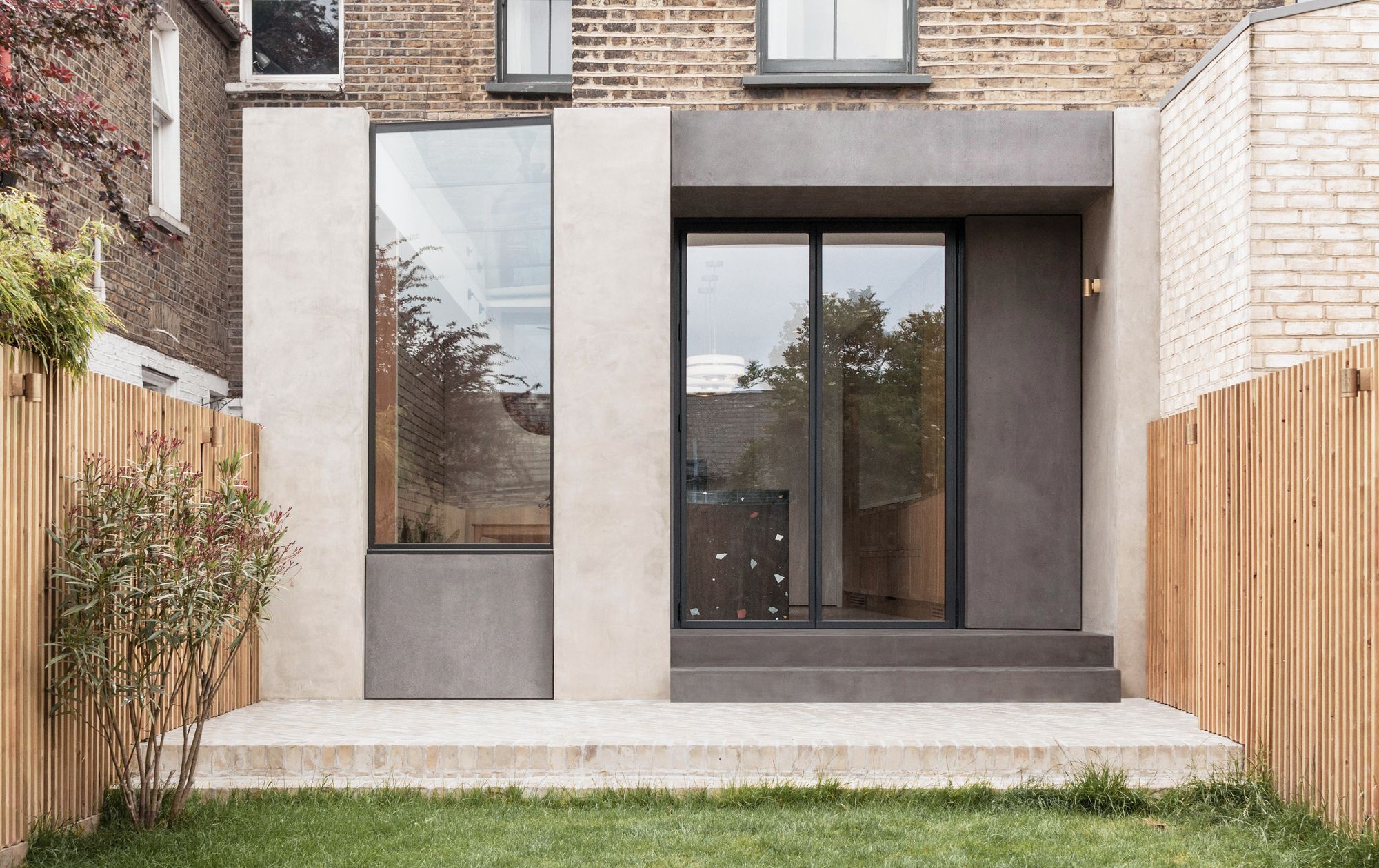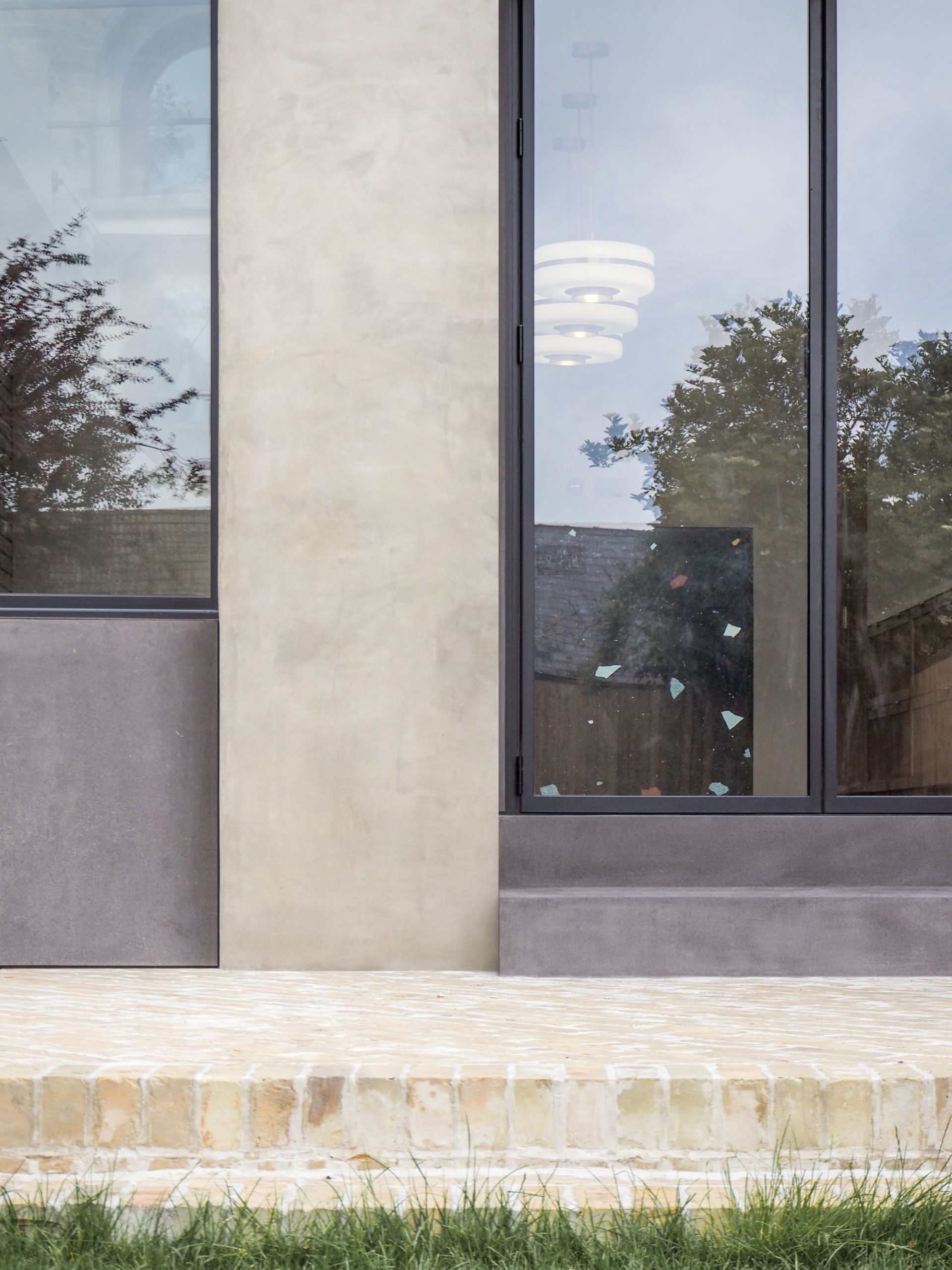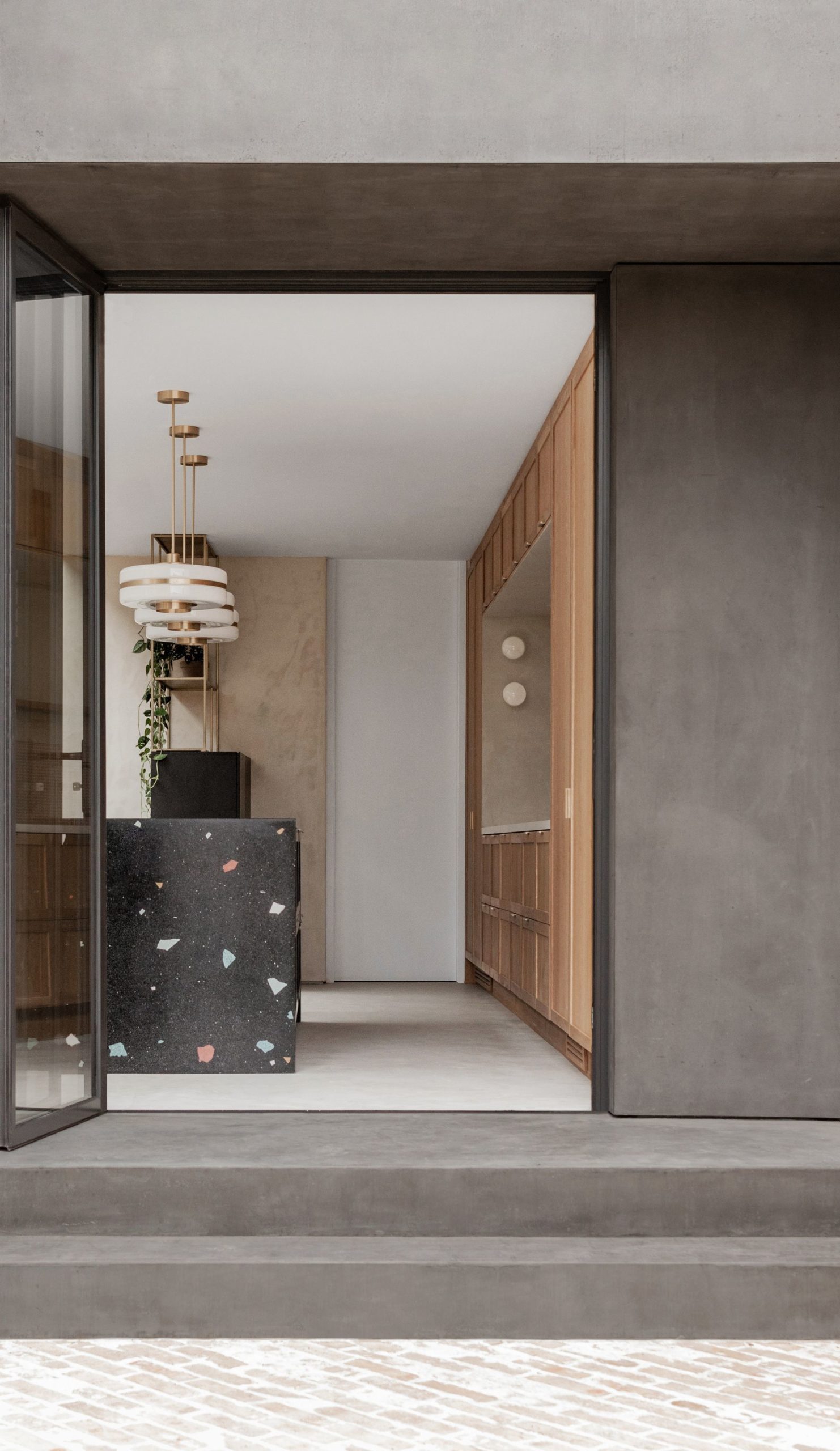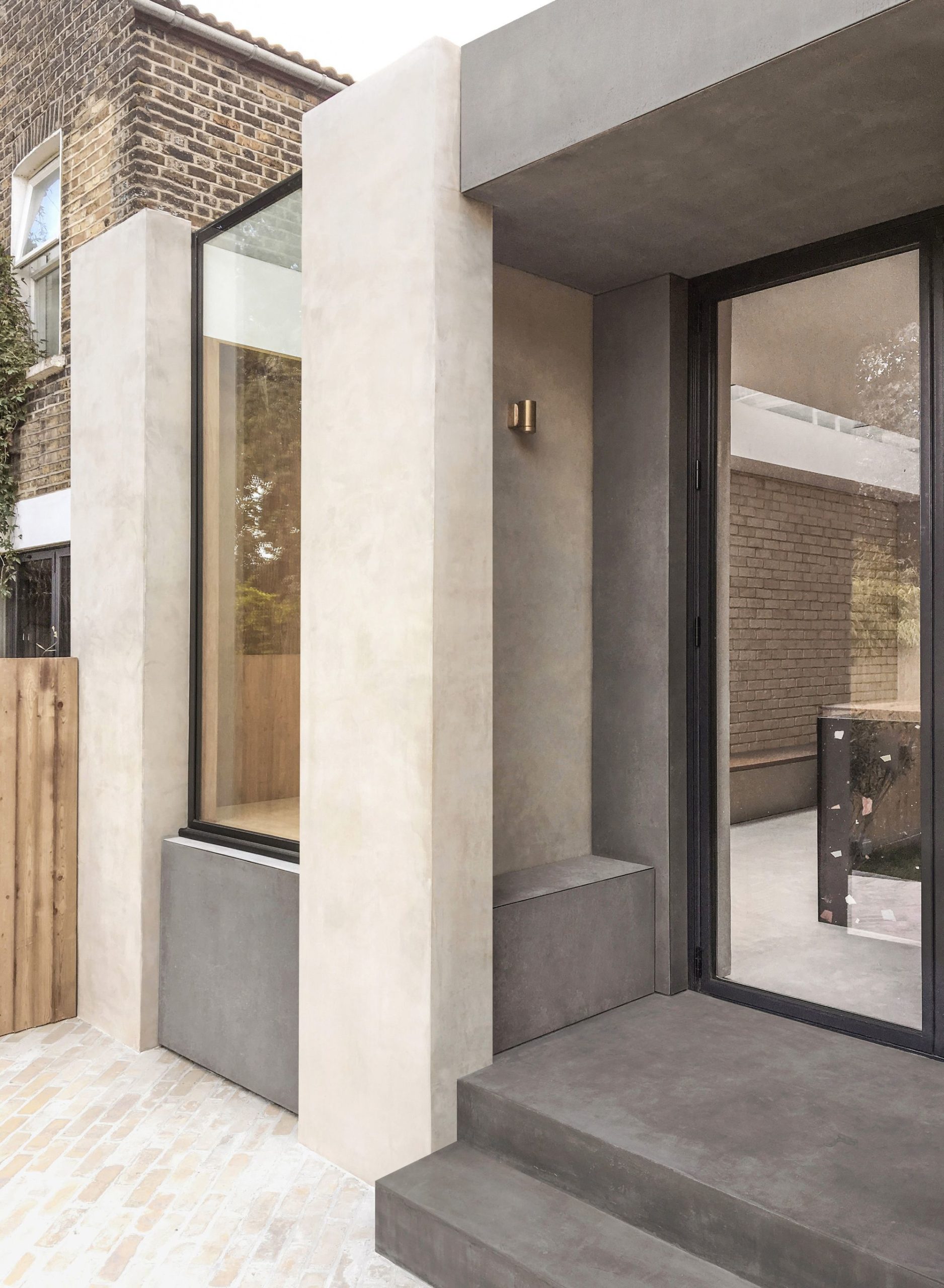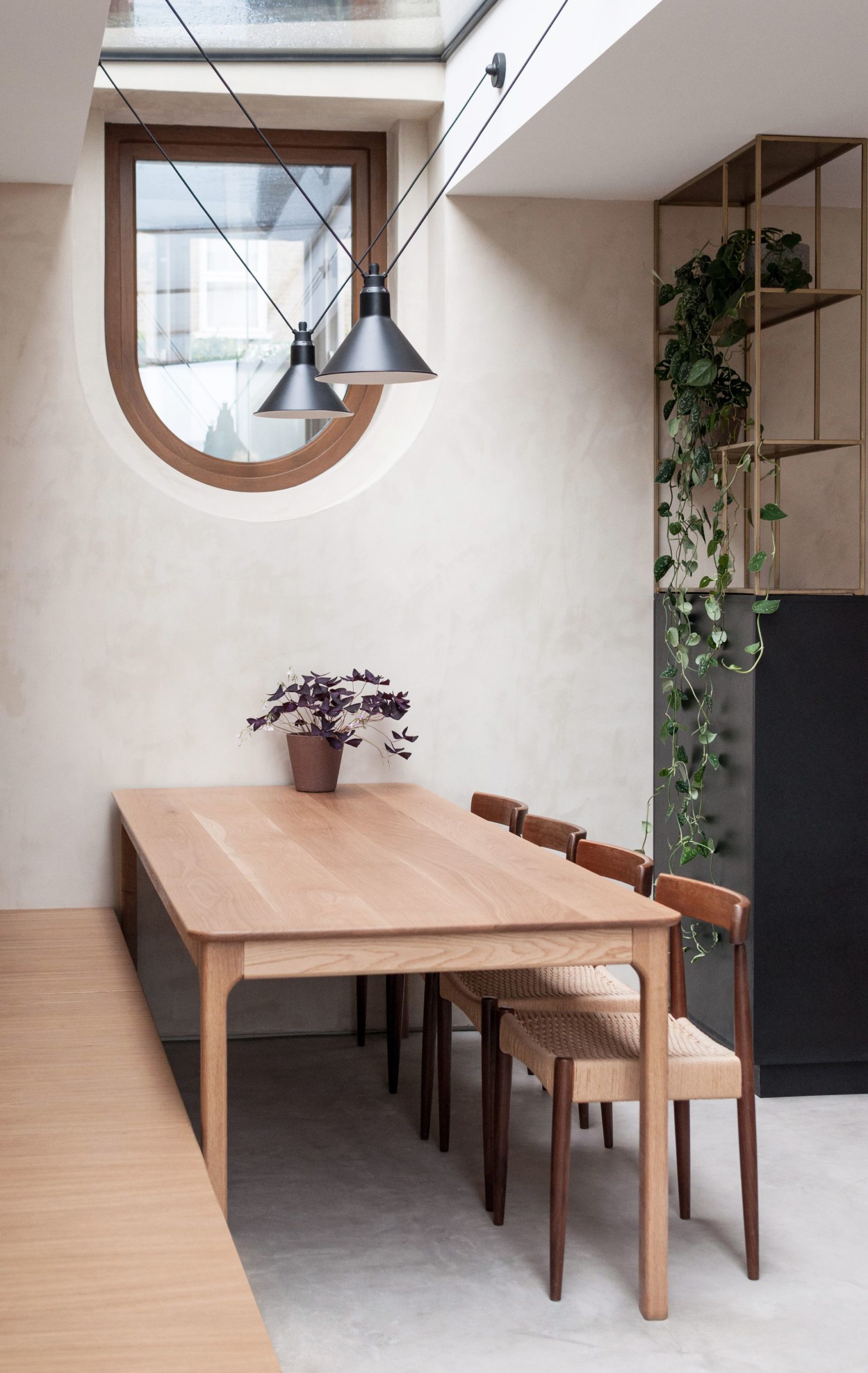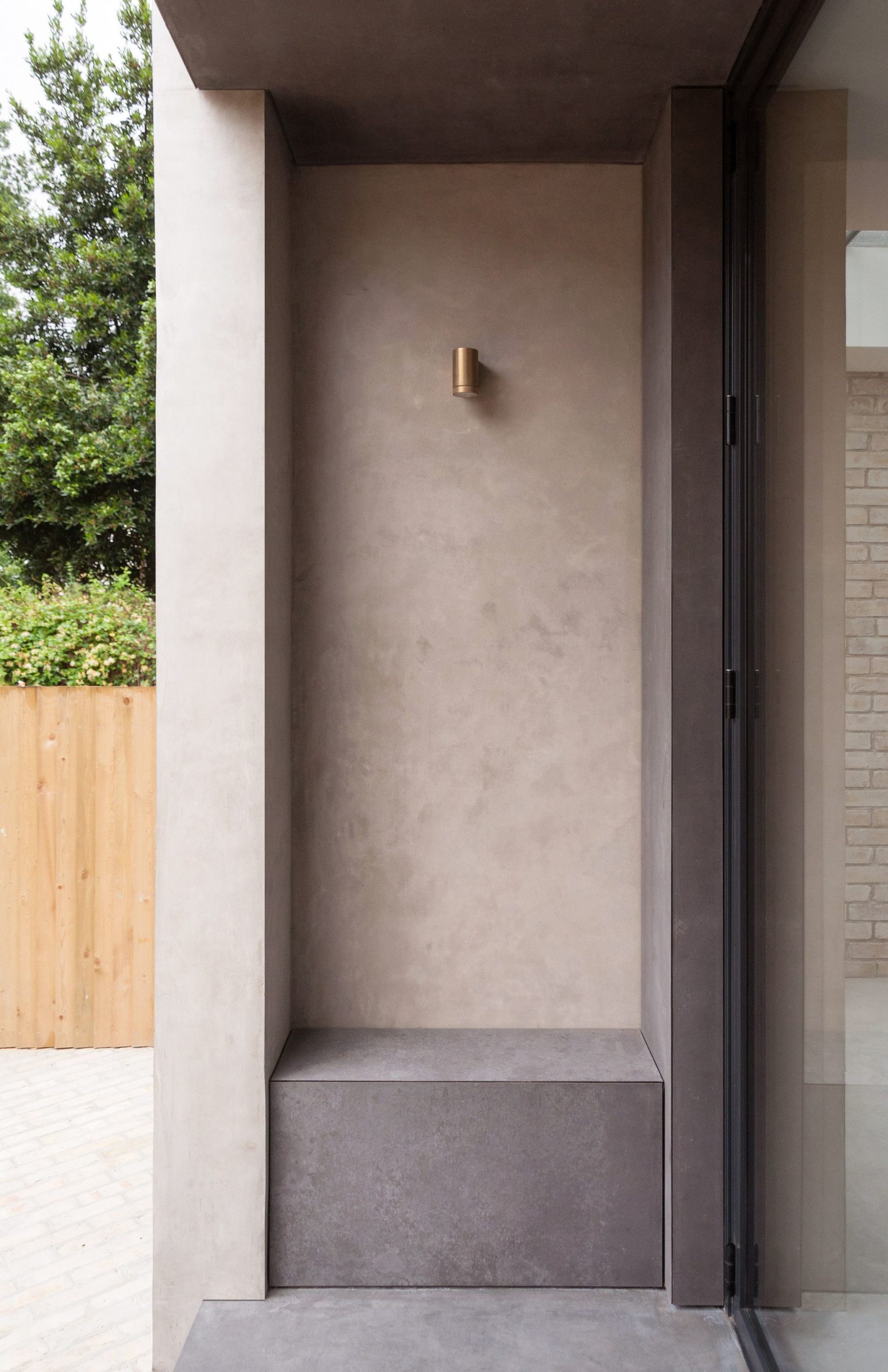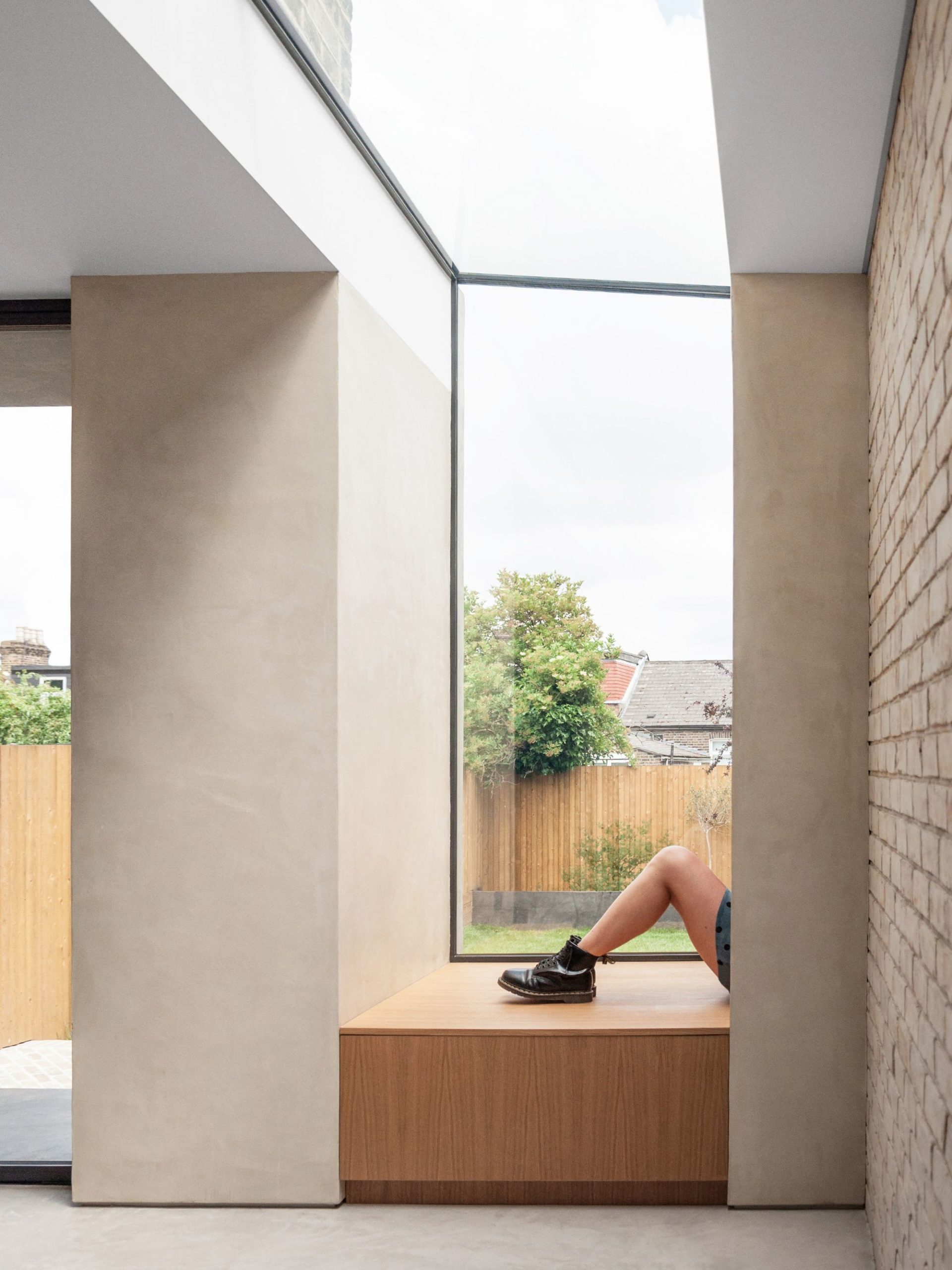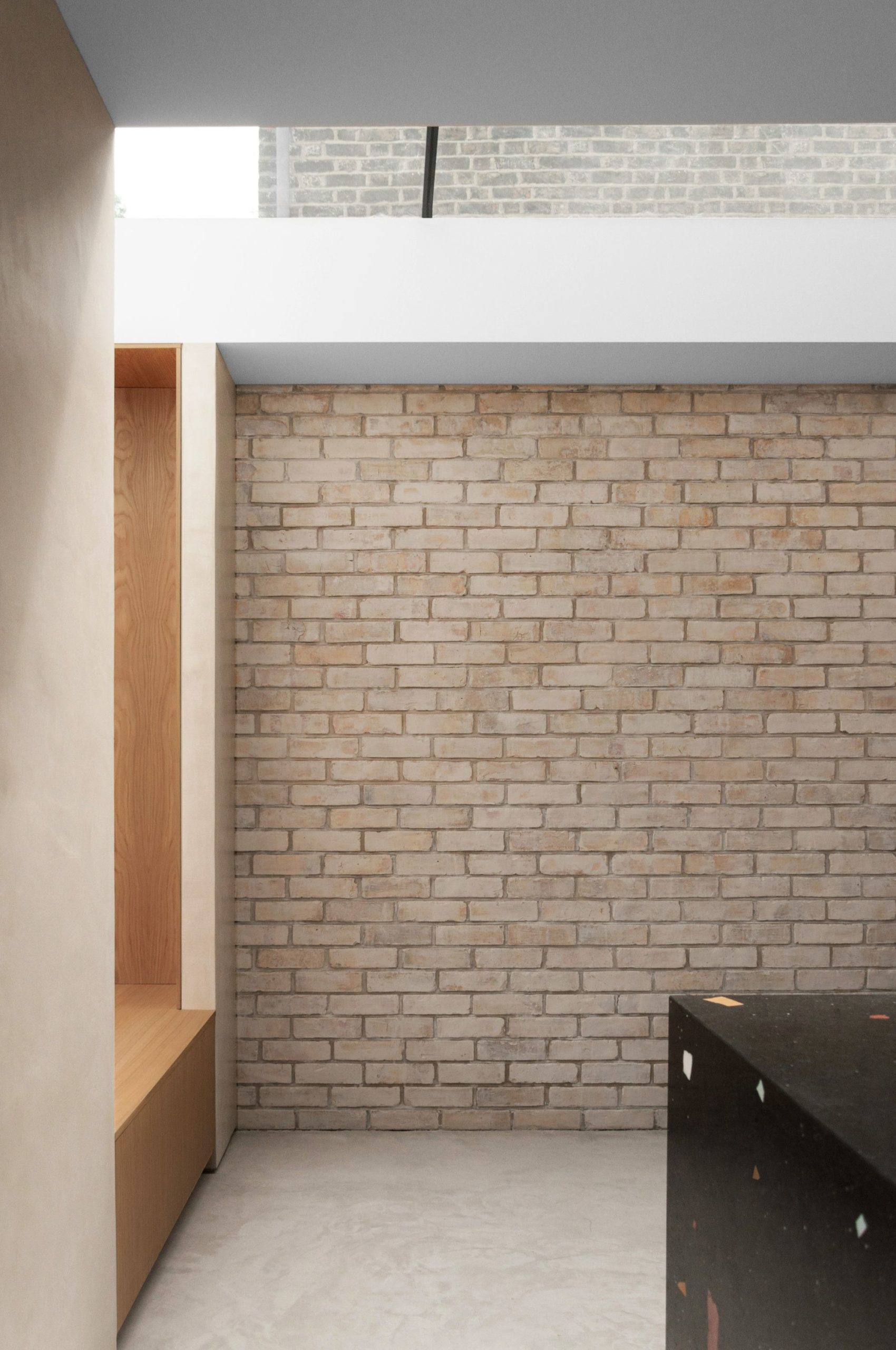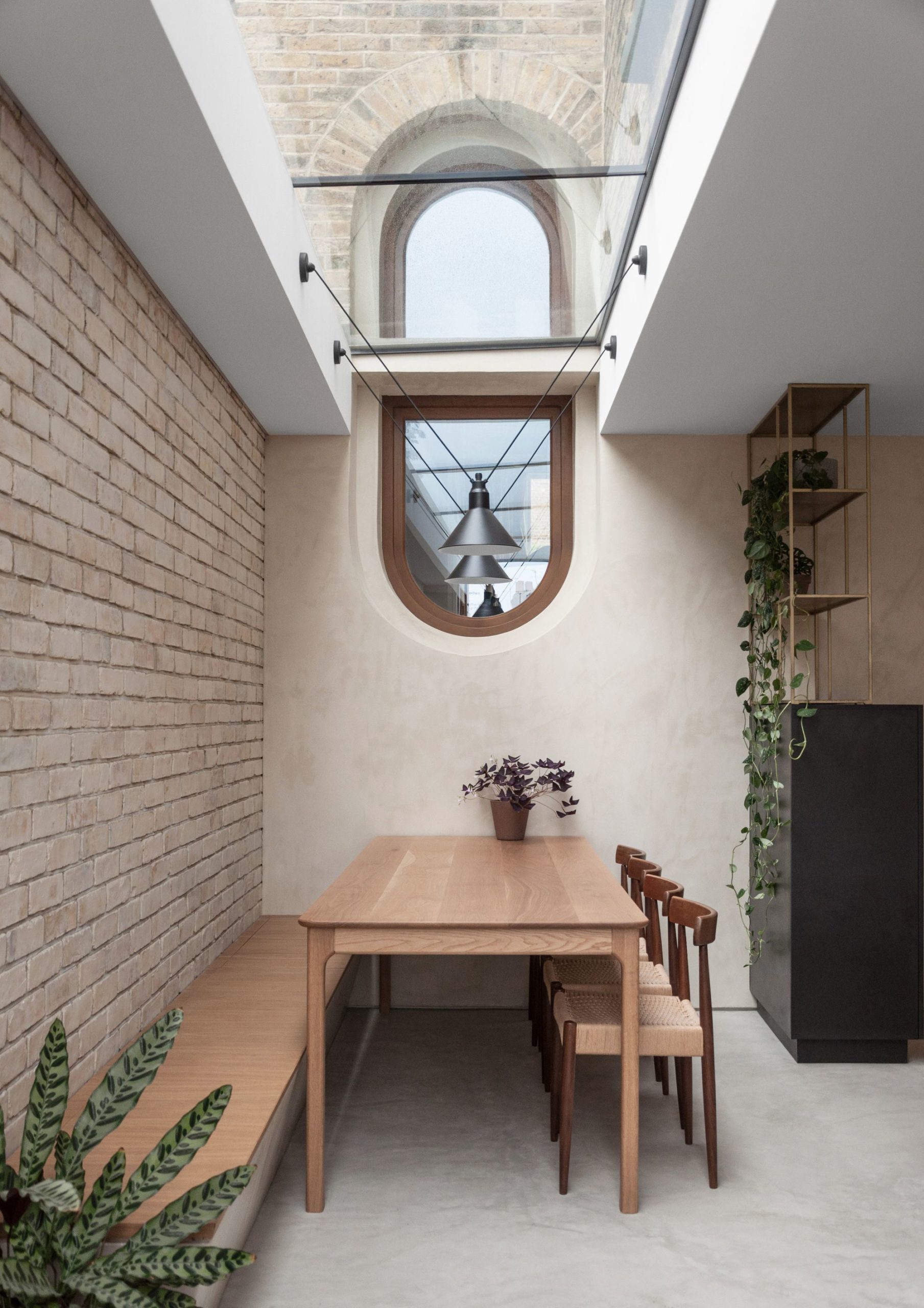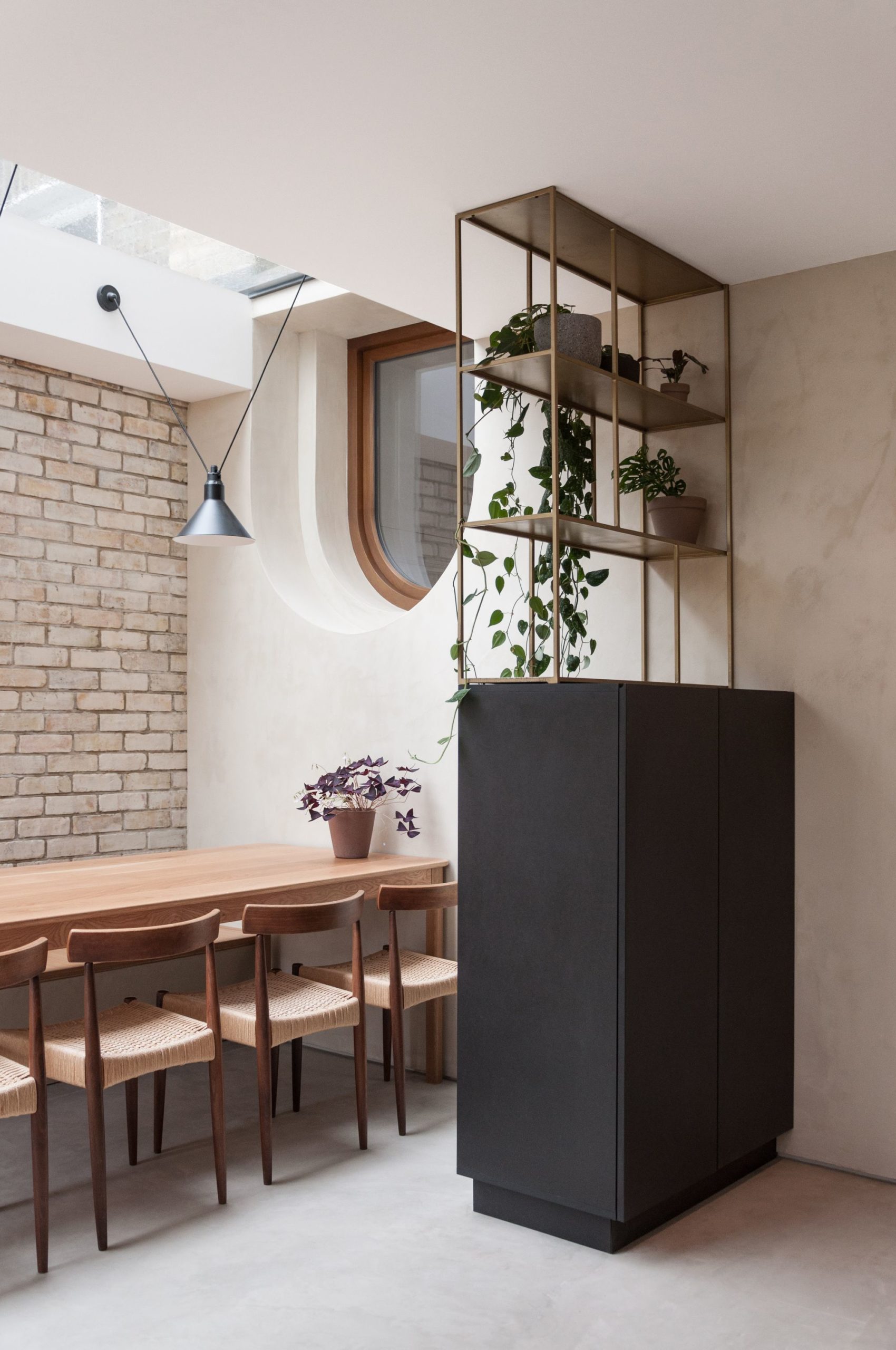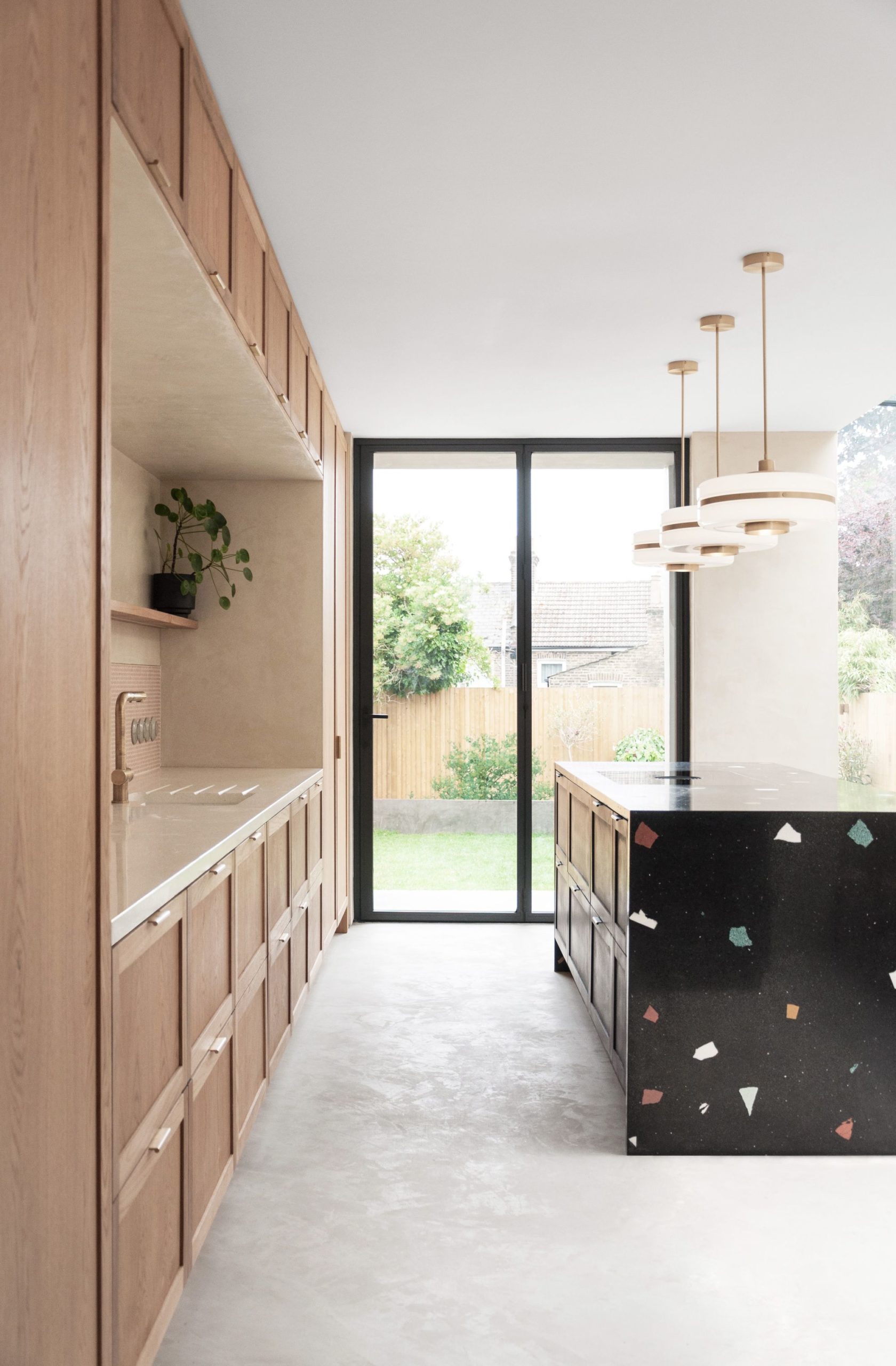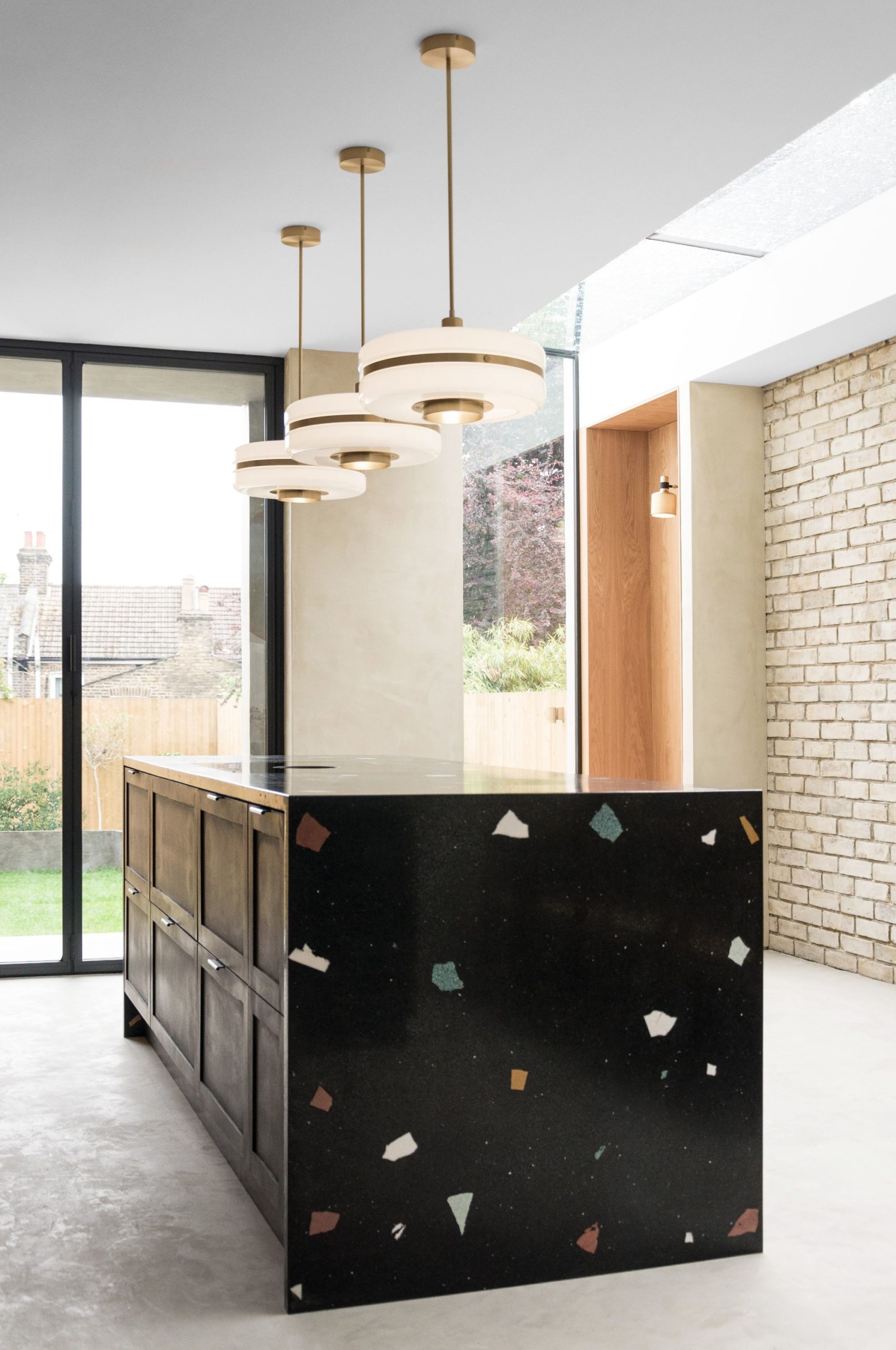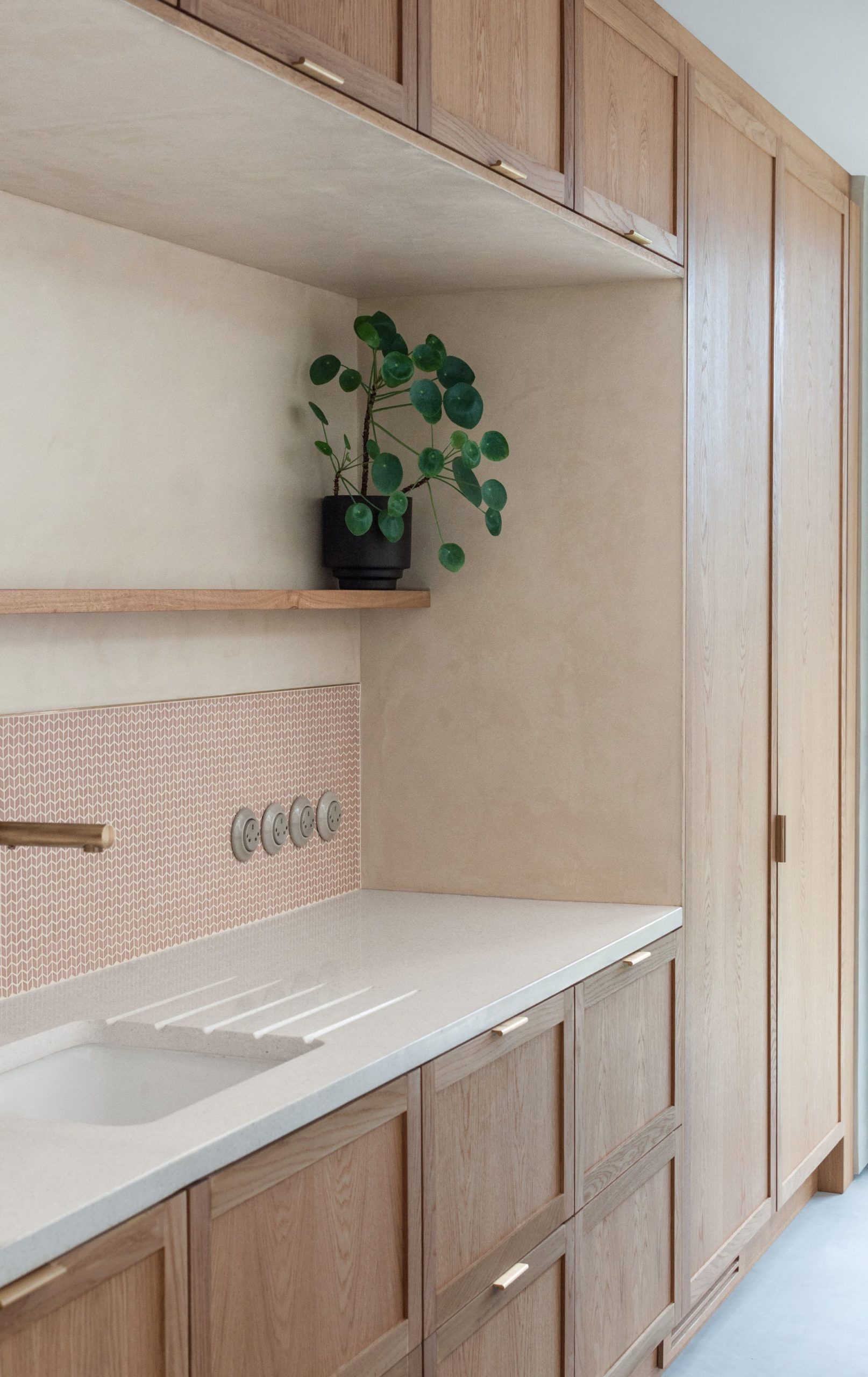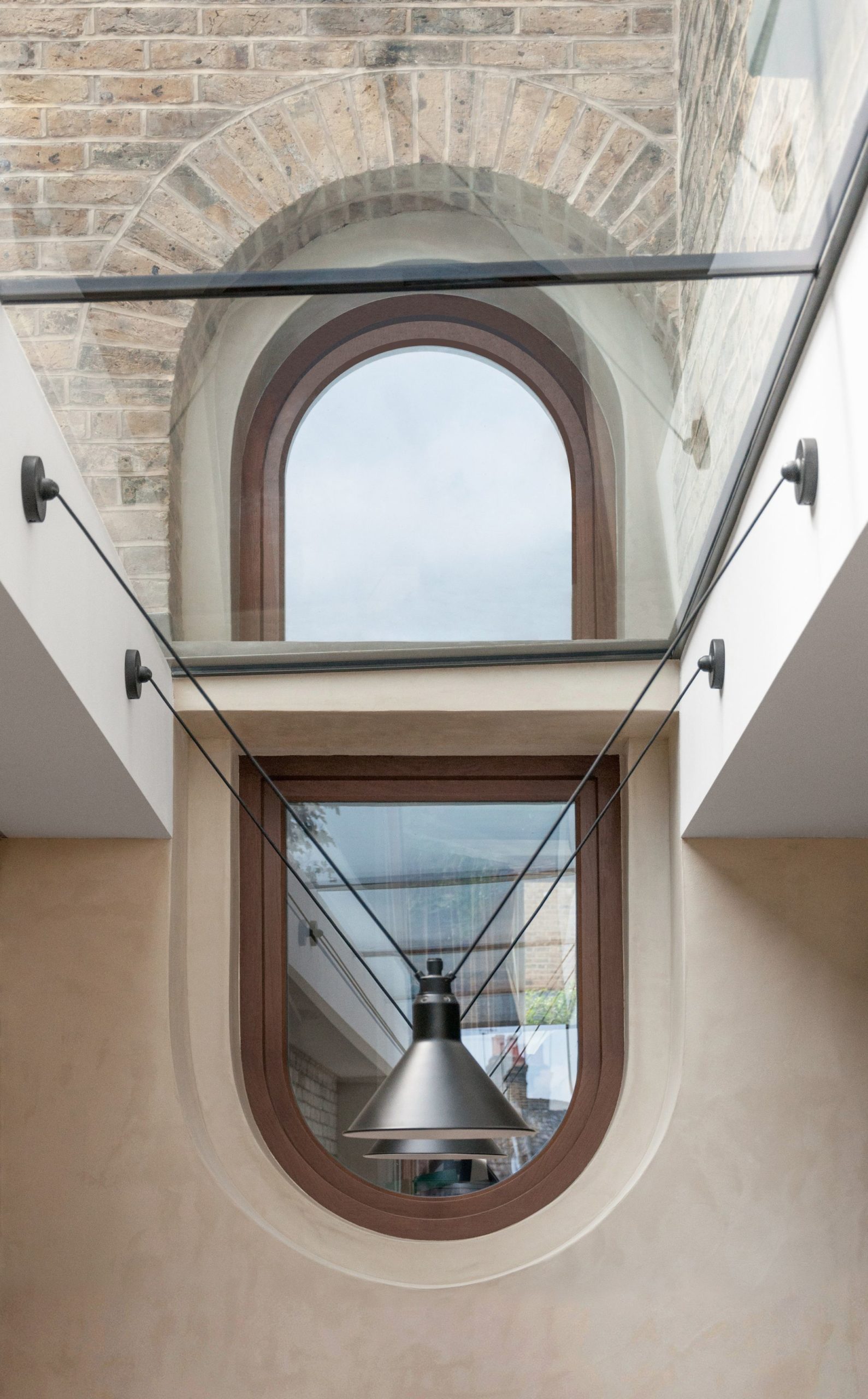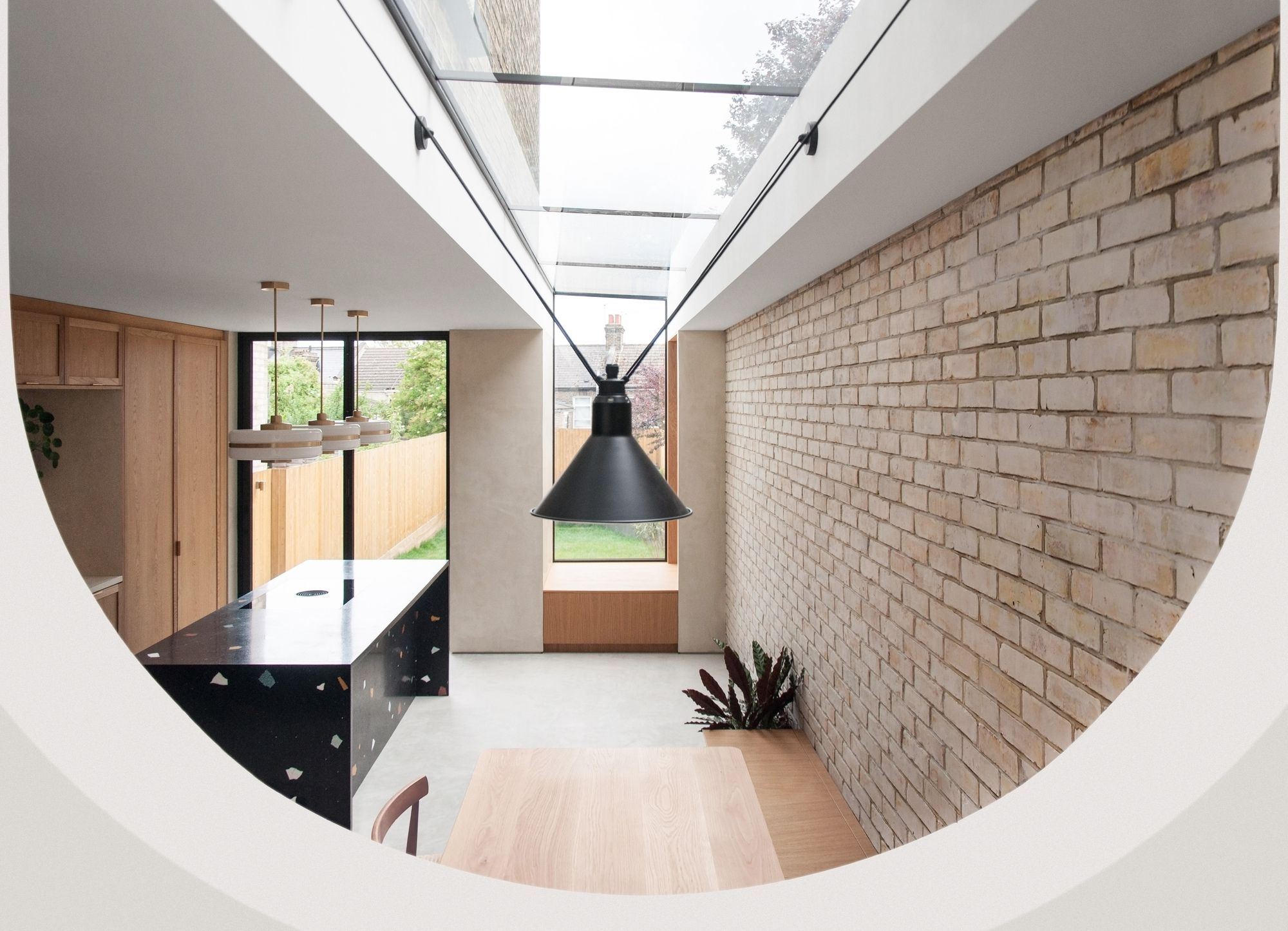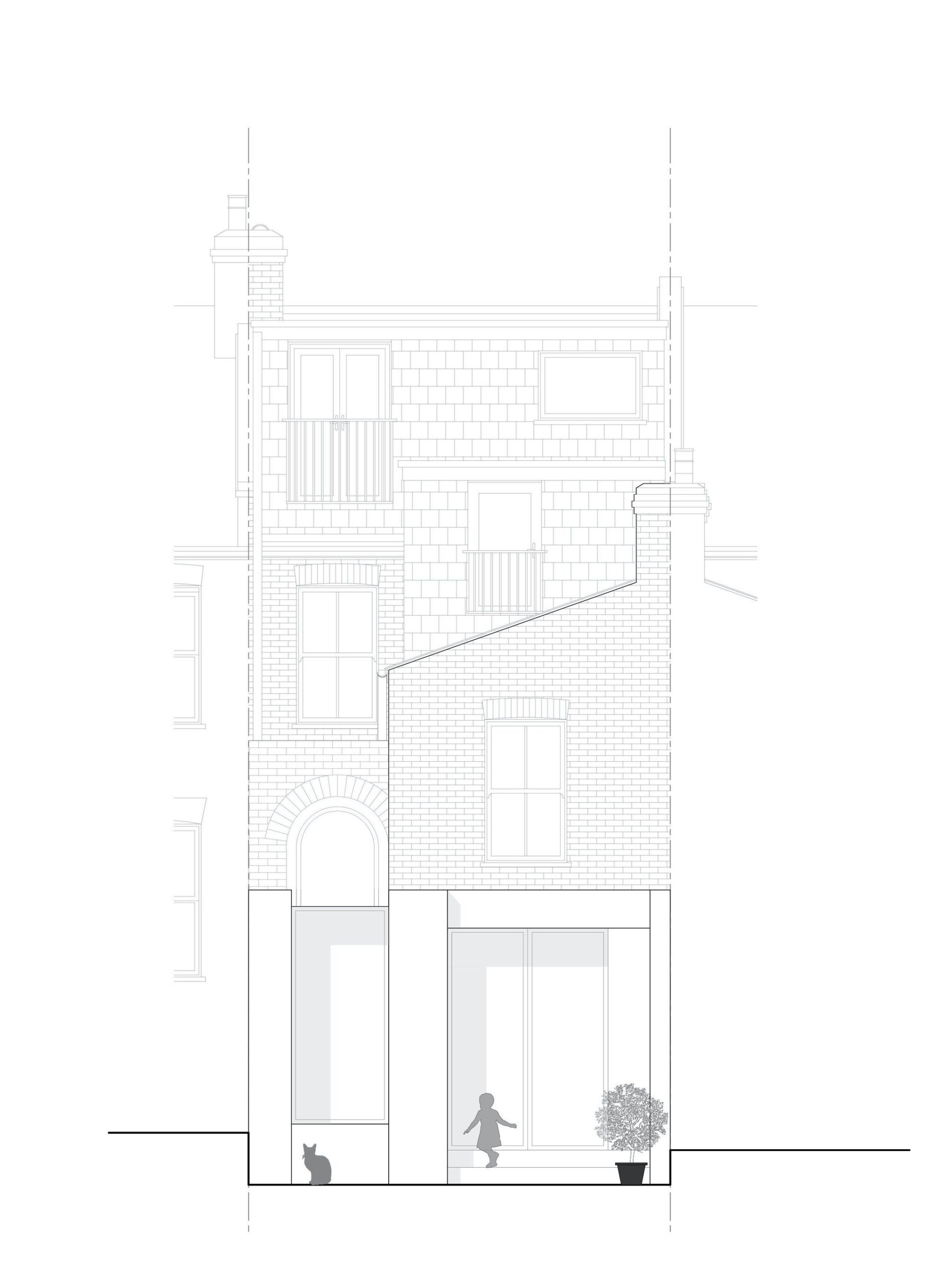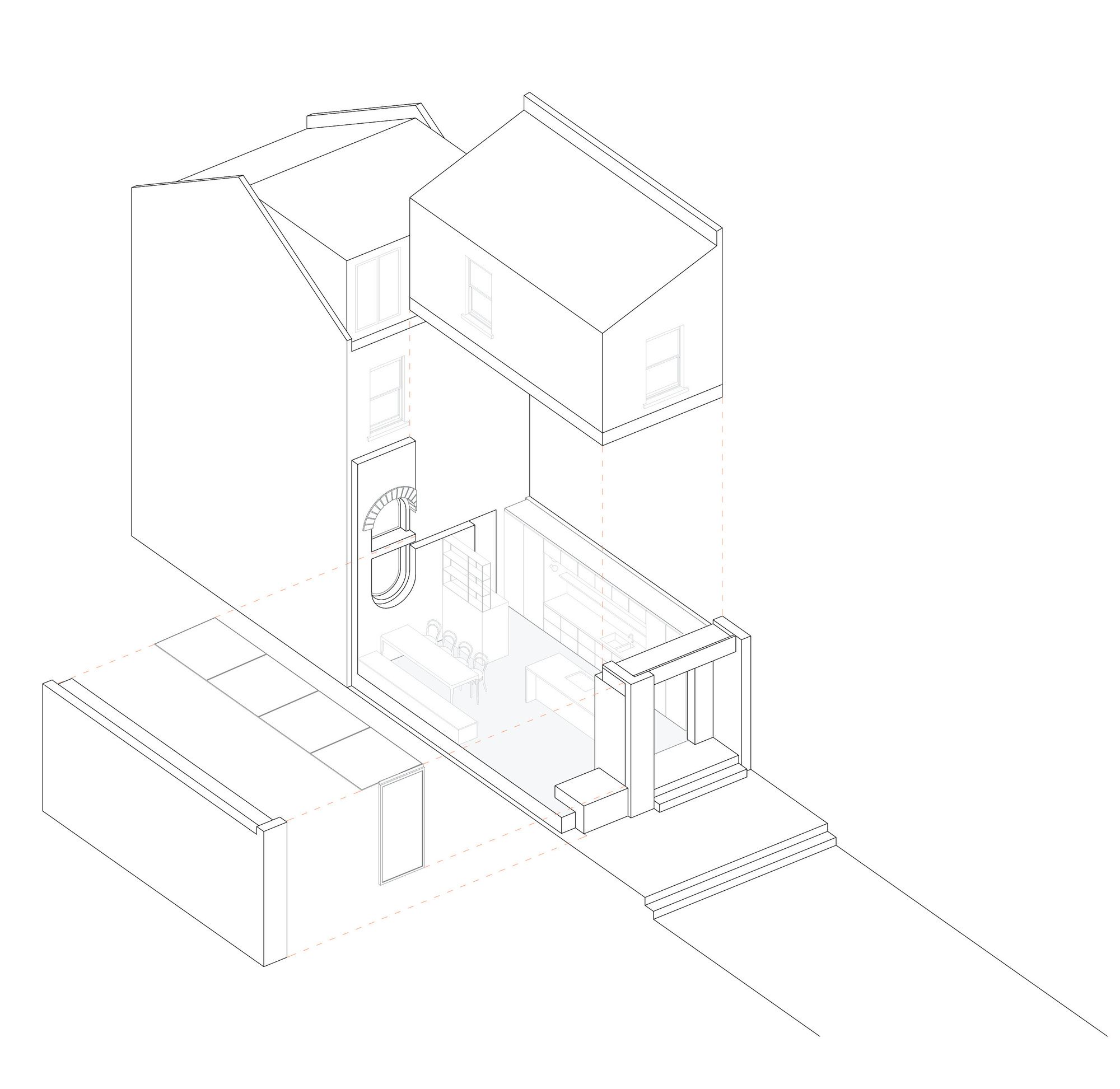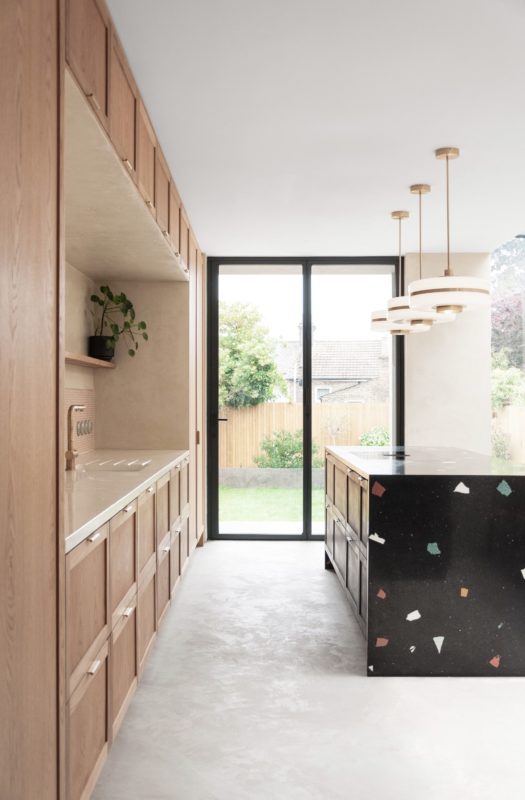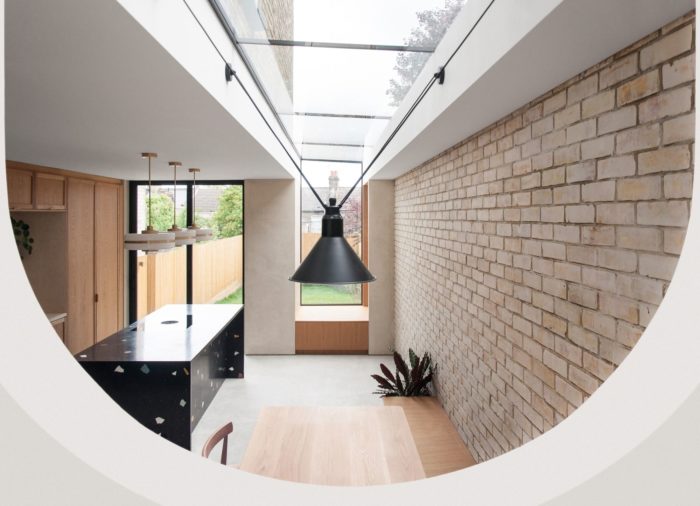Glyn House
Having decided to grow their family, the owners of the Glyn House were lacking a large open plan area where everyone can be together and enjoy the garden views. Our studio was therefore asked to rethink the rear part of their Victorian property, where the kitchen was located, and produce a large space that fits a variety of everyday activities while keeping a connection to the front living area of the house. That connection proved to be the biggest challenge of the project, as we dealt with a seven-step drop of levels between the living and kitchen areas while figuring ways of concealing a maze of plumbing pipes that surrounded the existing rear facade. The design solution took the form of an elongated capsule window with a stepped cill outlining its shape and hiding the building’s functional elements in its void.
A large skylight cuts the capsule win-dow in half and establishes a connection to the living area through the bottom half and cross ventilation of the space through the top. The generously glazed strip continues along the entire space bringing in ample natural light and wraps around the facade, creating a cosy daybed with tall uninterrupted views of the garden. The kitchen, dining, and daybed areas are all given a separate unforced presence inside the new space, taking into consideration their usability and the various functions of family life. It is clear that our studio’s proposal focuses on natural light and quality of space, but another major factor of our usual design process is materiality. A minimal facade with brutalist influences features vertical polished plaster pillars connected with black concrete panels and a pale brick floor stepping down towards the garden.
The capsule window also reflects in its shape those brutalist tendencies, but the stained oak timber of its frame reveals a softer approach to the design. Elements of the facade such as the pale bricks and the grey polished plaster are brought inside and are paired with warm oak carpentry, sand-colored plaster, and brass in a deliberate attempt to have the interior represent a more private version of the same architecture. Black volumes such as the bespoke terrazzo kitchen island and the dining unit, together with the white ceiling throughout the space are designed to provide the necessary contrast against the palette of natural materiality and therefore intensify the experience of raw, handmade surfaces. The result is a bright, spacious, and unique addition to a traditional property that connects the space to its landscape and celebrates the craftsmanship of its materiality.
Project Info:
Architects: Yellow Cloud Studio
Location: London,United Kingdom
Area: 45 m²
Project Year: 2020
Manufacturers: DCW EDITIONS, Diespeker & Co, Bert Frank, Claybrook, Dyke & Dean, Fakktory, Stuart Indge
